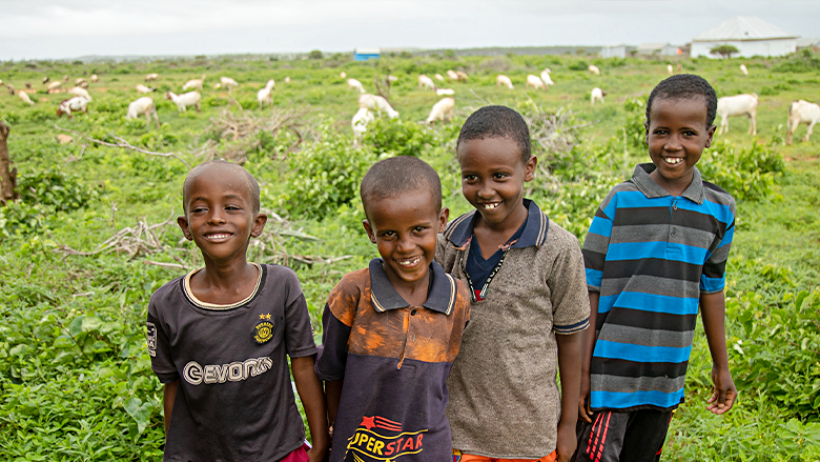[Event Recap] Somalia Disaster Risk Finance Diagnostic dissemination workshop

Somalia is a highly vulnerable country to natural hazards and struggles severely with disaster response. This chronic vulnerability, exacerbated by frequent and intensifying droughts, floods, and other climate-related events, tripling since 1980, has devastating consequences for lives, livelihoods, and the economy. The Federal Government of Somalia (FGS) has recognized the urgency of strengthening its capacity to manage the financial and economic impact of climate shocks and disasters.
Considering the knowledge needed, the FGS requested technical support from the World Bank to strengthen its understanding of the financial and socioeconomic impact of disasters and crises and to plan and implement options to strengthen financial preparedness and resilience. The World Bank Urban, Resilience and Land (URL), Global Practice and the Finance, Competitiveness, and Innovation (FCI) Global Practice, in partnership with the Federal Government of Somalia’s Ministry of Finance have undertaken Somalia Disaster Risk Finance (DRF) Diagnostic which assesses how disaster response is currently funded, including the significant role of humanitarian partners. Building on this analysis, this diagnostic makes recommendations for both government and its partners to strengthen financial and operational preparedness to protect the government, as well as households and businesses. This diagnostic was funded by the Global Facility for Disaster Reduction and Recovery with technical support from the Financial Resilience Program (FRP), funded by the United States Agency for International Development (USAID).
This DRF Diagnostic was launched through a workshop hosted by the Somalia Crisis Recovery Project (SCRP) in a hybrid-event on Monday 25 November. This invite-only workshop was attended by 40 participants in person in Mogadishu, capital of Somalia, and 48 online participants including stakeholders from the public sector, humanitarian partners, development partners and the private sector. The workshop included several presentations on the current approach to financing response to disasters, the role of a Disaster Risk Finance Strategy, introduction to the Global Shield, and overview of the next steps.
Five key findings from the diagnostic:
- Funding for disaster response mainly comes after disasters occur from development and humanitarian partners. This unpredictability in timing in amount leads to a longer recovery.
- While response costs are substantial compared to government spending – at about 12 percent of the budget - they remain a small portion of overall humanitarian aid. This means that pre-arranged funding is both realistic and achievable.
- The required prearranged funding is slowly becoming available through insurance and trigger-based financing; the scale and speed needs to be accelerated.
- Adopting a risk layering approach is essential to minimize overall response costs, it could create savings of US$32 million on average with even more savings for more extreme events.
- Somalia’s young public and private systems pose some challenges for financial resilience, but their rapid development is creating opportunities to improve financial and operational preparedness.
The highlight of the day was a panel discussion by senior government officials and partners to advance government-led DRF policy dialogue. The panelists included the director general of Ministry of Finance, the director general of Ministry of Planning, the Commissioner of Somali Disaster Management Agency, a representative of the director general of the Ministry of Labour and Social Affairs, and the Head of Program World Food Programmer.
Three takeaways from the panel:
- FGS priorities lie in protection of livestock sector, infrastructure and human capital investments, which are critical for export earnings and economic growth, leading to more funding for disaster response
- The necessity for a holistic approach which includes long-term aspirations, short-term goals, underpinned by governance reforms for sustainable change.
- The criticality of government leadership and ownership, with continuing support from partners and extensive engagement to build buy-in across government.
Going forward, led by the Ministry of Finance, the FGS will establish a multi stakeholder technical working group to develop the Strategy while the World Bank will provide technical support. The first strategy preparation workshop is planned for early 2025. The Global Shield also presented its coordination process, including a step towards development of a funding proposal for direct support from any of its three financing vehicles to FGS to address the gaps in Climate and Disaster Risk Finance and Insurance (CDRFI) instruments.
If you would like to learn more about Somalia and its DRF diagnostic, keep tuned for an upcoming blog.
You can find the Somalia DRF Diagnostic through this link here.